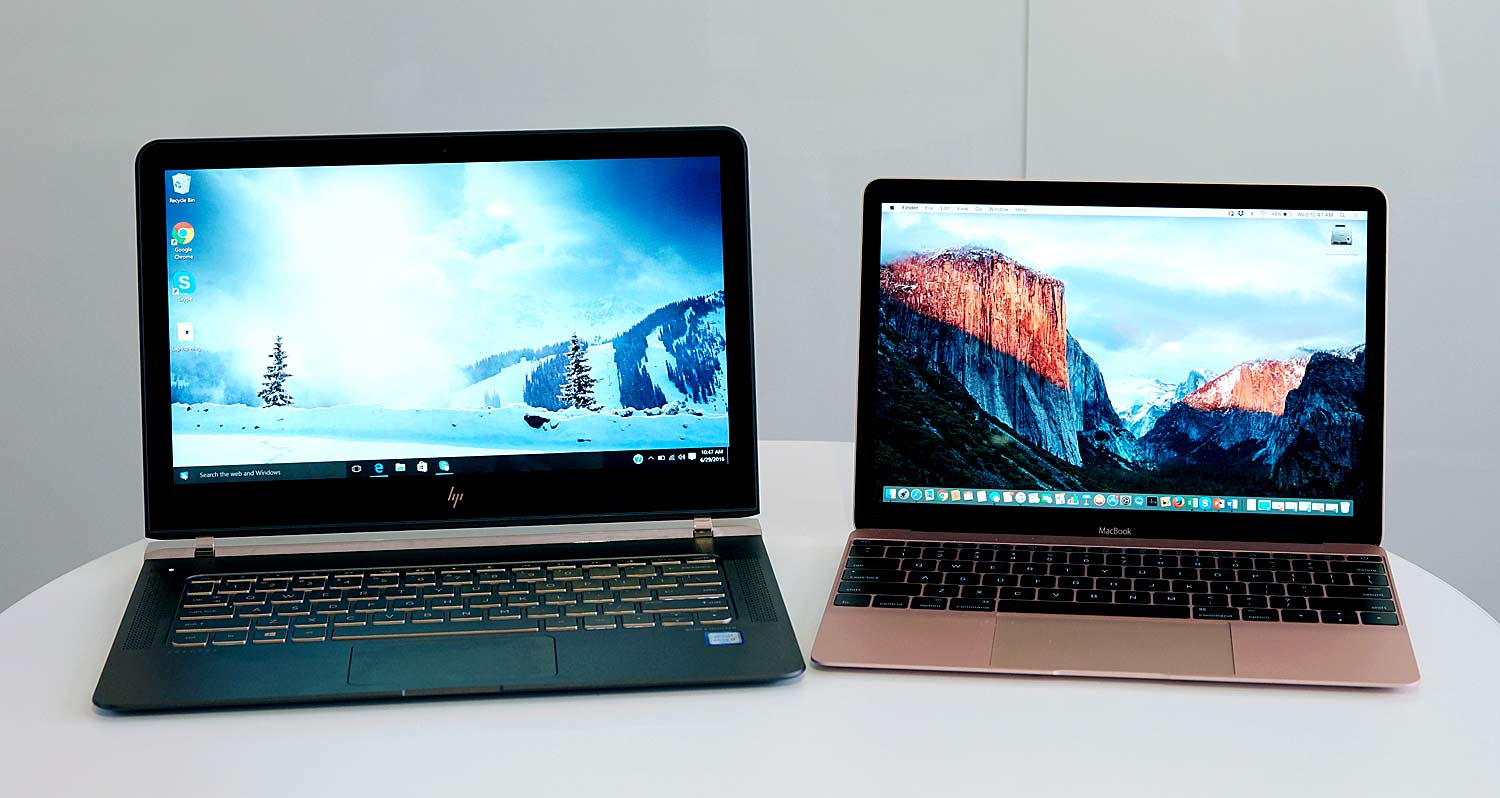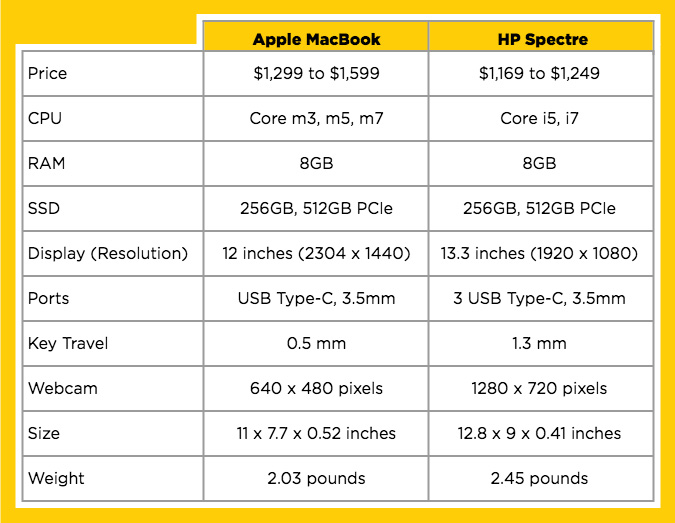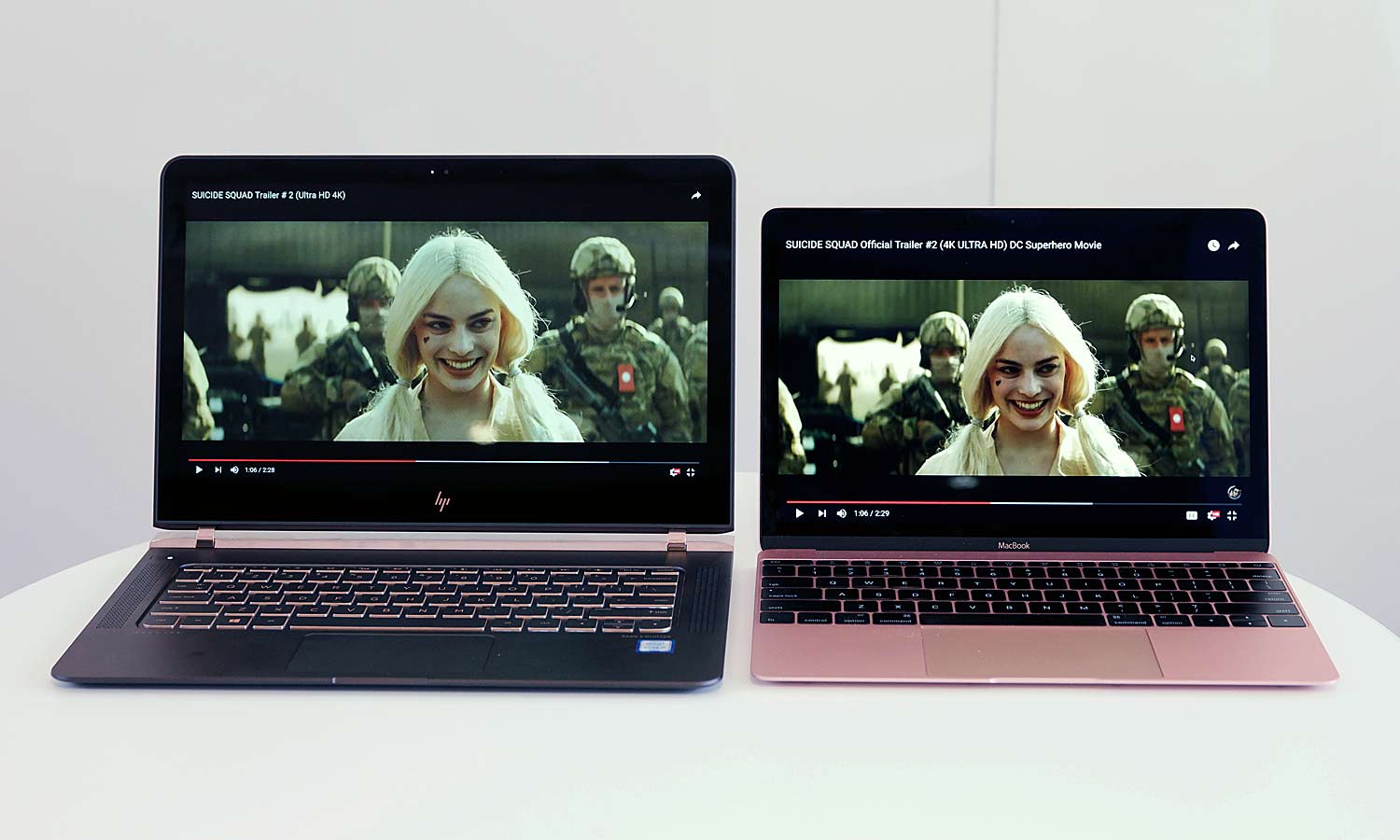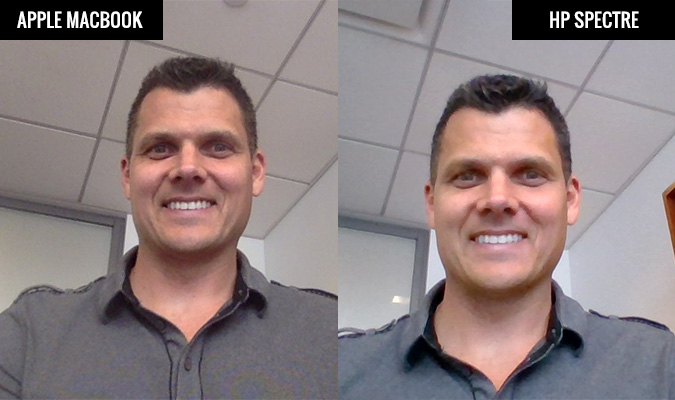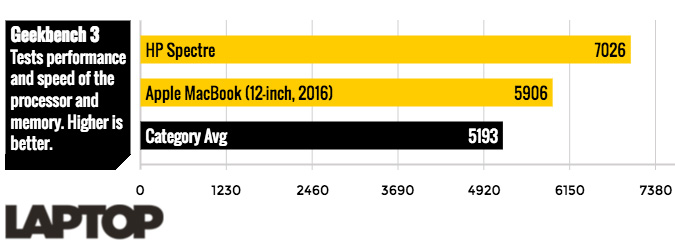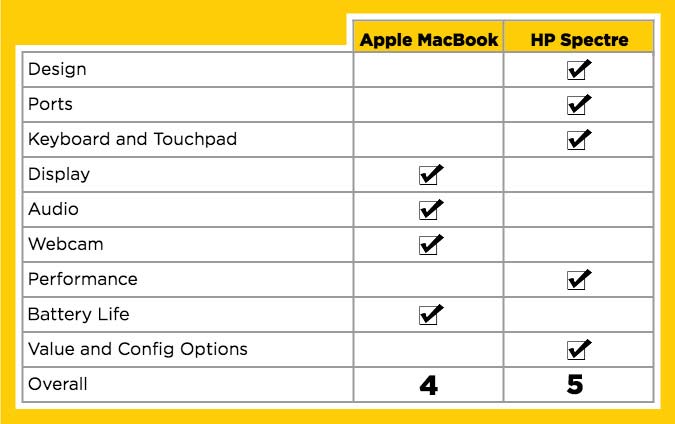Apple MacBook vs HP Spectre: Superthin Laptop Showdown
Every laptop maker wants to one-up the MacBook. And why not? Apple's $1,299 ultraportable is extremely light and thin, and packs a rich Retina display and plenty of staying power into that stylish design. HP's answer is the Spectre (starting at $1,169), which is even thinner than Apple's machine and boasts more ports, a full-power Core processor — no dinky Core M here — and a cushy keyboard. However, the Spectre makes trade-offs — just as the MacBook does.
To find out which supersvelte system is tops, we put them through nine rounds of competition. Although this contest was very close, the HP Spectre came out on top. Here's why.
Design
The HP Spectre is the self-proclaimed thinnest laptop on Earth, and at 0.41 inches, it certainly cuts a striking figure.
The Apple MacBook is 0.14 to 0.52 inches thick, though it's hard to tell the difference between the two machines when they're side by side.
MORE: HP Spectre: World's Thinnest Laptop Reviewed
What's even more striking about the Spectre is its two-tone body, which is made of carbon fiber and aluminum. The ash-black-and-copper combo definitely makes this system pop — it's anything but a MacBook clone. However, although the laptop's polished hinge looks pretty, it picks up fingerprints quickly.
Sign up to receive The Snapshot, a free special dispatch from Laptop Mag, in your inbox.
MORE: Apple MacBook Review: Better, But Not the Best
At 2.03 pounds, the MacBook is lighter than the 2.45-pound Spectre, and it's more compact because of its smaller 12-inch display. Apple also gives you a choice of four colors, but its overall aesthetic isn't much different from, or more exciting than, other Mac portables.
Winner: HP Spectre. The MacBook is lighter and gives you more color options, but the Spectre oozes with unique style.
Ports
Neither the MacBook nor the Spectre makes room for a full-size USB port or SD card slot, but HP gives you more ports in its slim design. The Spectre sports three USB Type-C ports; one is a USB 3.1 port, and two are Thunderbolt 3, giving you the fastest speeds possible as well as support for up two external 4K displays at once. I just wish all of the ports weren't on the back.
By contrast, the MacBook has a lone USB Type-C port, which means you can't charge the laptop and plug in a peripheral at the same time without using a dongle. Plus, the MacBook's port doesn't support the latest Thunderbolt 3 spec.
Winner: HP Spectre.Three ports are better than one.
Keyboard and Touchpad
This round is no contest. The MacBook's keyboard offers very little travel — just 0.5 millimeters — making the Spectre's 1.3 mm of travel feel positively cushy by comparison. There's zero learning curve with the HP, while the Apple keyboard requires some adjustment.
The Spectre's 3.75 x 2.15-inch glass touchpad is roomy and provides smooth scrolling and accurate text selection, but people who use two fingers may find the pad to be jumpy. The MacBook's 4.4 x 2.7-inch Force Touch trackpad is significantly larger and therefore easier to use.
Winner: HP Spectre. Its keyboard is just more comfortable.
Display
The HP Spectre's 13.3-inch display has some advantages over the MacBook's 12-inch panel. In addition to being larger, it's also brighter (359 nits versus 327 nits for the MacBook). However, in all other aspects, the MacBook's screen is superior.
Apple's display is sharper than HP's (2304 x 1440 versus 1920 x 1080 pixels), and I noticed the difference immediately while watching the new Jason Bourne trailer. I could make out more lines in Matt Damon's face, as well as more details in his leather jacket. However, HP's brighter display allowed me to make out details in his dark shirt more easily; it was a dark blob on the MacBook.
MORE: The Best Laptops for Every Need
In terms of colors, the MacBook produces slightly more of the sRGB color gamut than the Spectre (107 percent versus 100 percent), and its hues are a bit more accurate. Apple's panel registered a Delta-E error rating of 1 (0 is perfect), while the HP notched 1.23.
Winner: Apple MacBook.Although it's smaller, the MacBook's screen is sharper and more colorful.
Audio
I don't know how Apple does it, but the speakers on the MacBook Pro put HP's Bang & Olufsen's speakers to shame. When I watched the Jason Bourne trailer, the MacBook produced louder sound and more powerful explosions.
It was the same story when I streamed the Red Hot Chili Peppers on Spotify. Anthony Kiedis' vocals sounded tinny on the Spectre; on the MacBook, they were crisper, with a more pronounced bass line.
Winner: Apple MacBook.The audio experience is superior all around.
Webcam
You would think that the HP Spectre's 720p webcam would produce better images than the MacBook's 480p shooter. But you'd be wrong.
In a side-by-side photo test, the MacBook produced an image with more accurate skin tones and better detail, while the Spectre's image looked blurrier. On the plus side, the Spectre's webcam produced a brighter image and made my skin look better.
Winner: Apple MacBook. Resolution isn't everything.
Performance
The HP Spectre benefits from a full Core i5 or i7 processor, compared to a lower-power Core m3 or m5 chip in the MacBook. (You can upgrade the Apple to a Core m7 CPU, but it still won't be as speedy as what's inside the HP.)
On the Geekbench general performance benchmark, our HP Spectre review unit with a Core i7 processor, 8GB of RAM and a 256GB SSD scored 7,026. That's much higher than the Core m5 MacBook we tested with 8GB of RAM and a 256GB SSD, which hit 5,906. Just keep in mind that the Spectre needs a fan to squeeze this much power into such a slim frame, and it can get noisy.
MORE: Best Ultrabooks (Thin-and-Light Windows Laptops)
On other tests, the MacBook performed quite well. Its flash storage turned in a transfer speed of 355.9 MBps, compared with 195.9 MBps for the Spectre. And the MacBook took just 3 minutes and 11 seconds to match 20,000 names and addresses in OpenOffice, while the HP took a bit longer, at 3:56.
Winner: HP Spectre. The MacBook has faster flash memory but a slower CPU.
Battery Life
Endurance is not the Spectre's strong suit.
On the Laptop Mag Battery Test, which involves continuous web surfing over Wi-Fi, the HP lasted a meager 6 hours and 13 minutes, which is well below the 7:55 ultraportable category average. The MacBook turned in a much longer runtime of 9:38 — more than 3 hours longer.
Winner: Apple MacBook.You can leave the charger behind.
Value and Configuration Options
While both the MacBook and the HP Spectre are decidedly premium laptops, the Spectre is a better bargain. The starting $1,169 configuration for the HP gets you a Core i5 CPU, 8GB of RAM and a 256GB SSD. In comparison, you need to spend $1,299 to get a weaker Core m3 processor on the Apple with the same RAM and storage. Stepping up to $1,299 for the HP gets you a faster Core i7 processor.
Apple charges a whopping $1,599 for a machine with a Core m5 CPU, but you also get 512GB of flash storage to go with it. HP charges an additional $250 to get a 512GB SSD, which would bring the price to $1,419 if you also opted for the beefier Core i7 chip — which is still less than the pricier MacBook.
Winner: HP Spectre.You just get more for your money.
Overall Winner: HP Spectre
Given how thin these two laptops are, it's only fitting that the HP Spectre eked out a victory by a slim margin. HP's laptop comes out on top for a few key reasons: It offers a better-looking design, a more powerful processor, more ports and a more comfortable keyboard, all for a cheaper price than the MacBook.
The MacBook is the superportable laptop to get if you demand long battery life, and it also offers a sharper display and better audio quality than the HP. But based on our comparison, the Spectre is the better overall choice.

